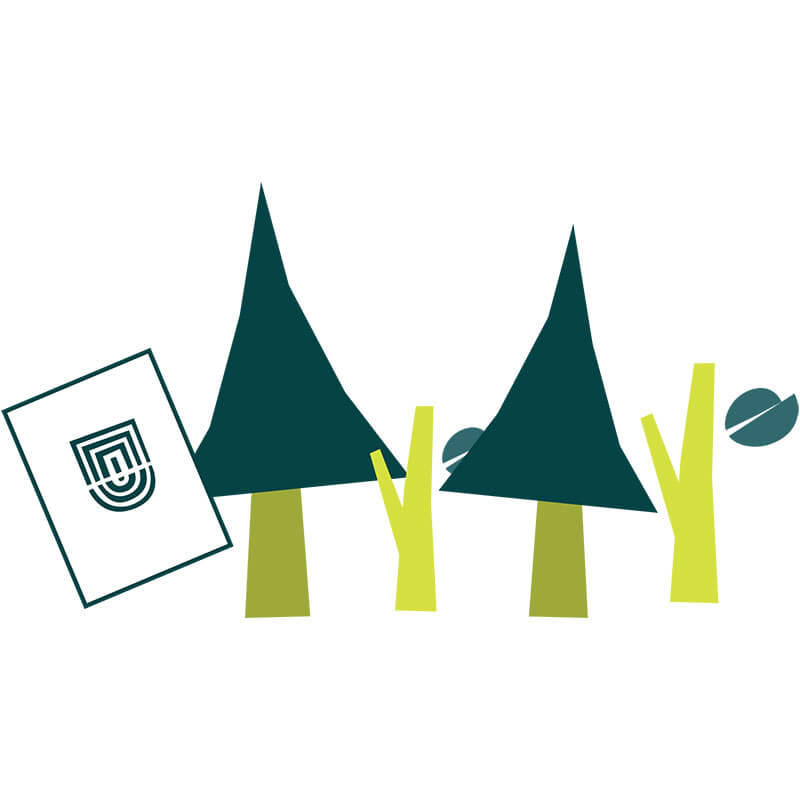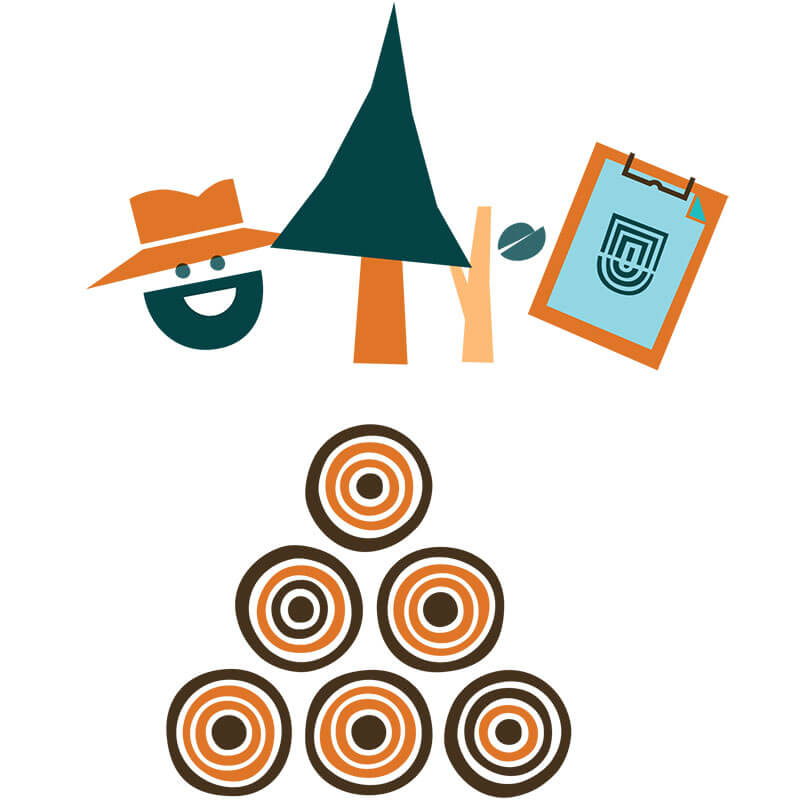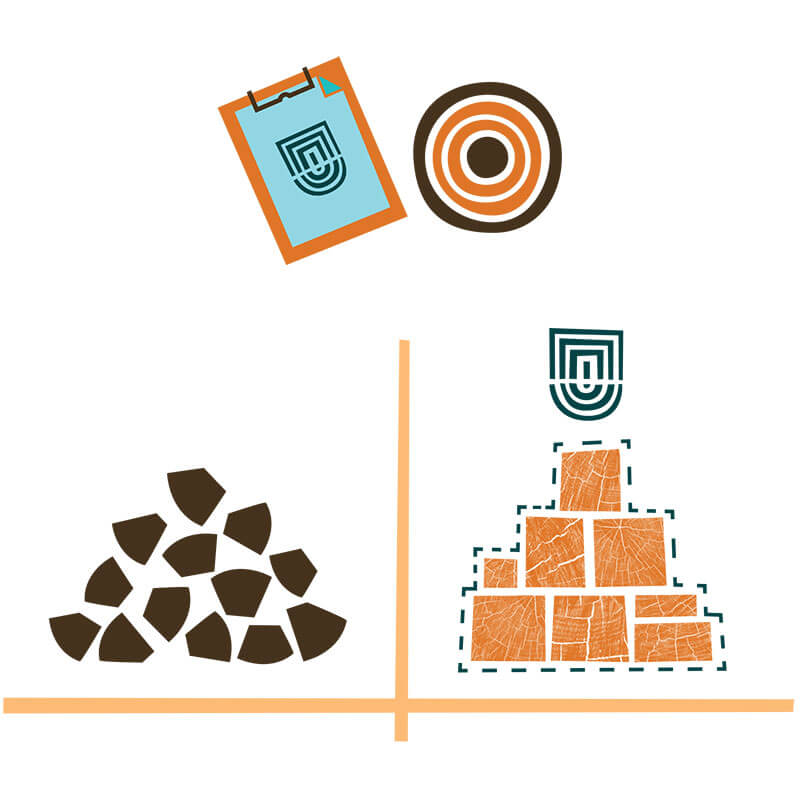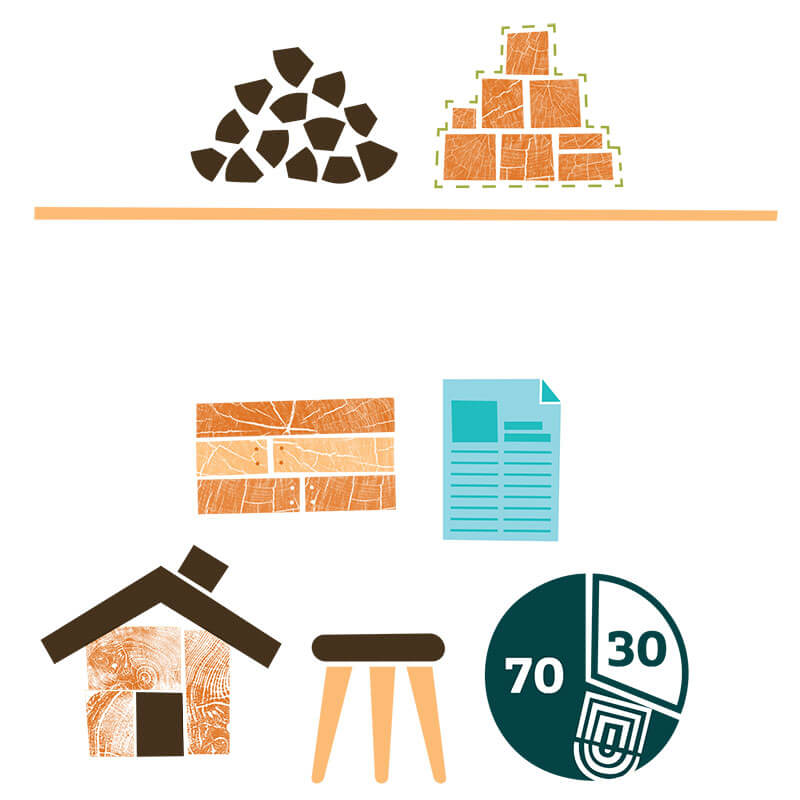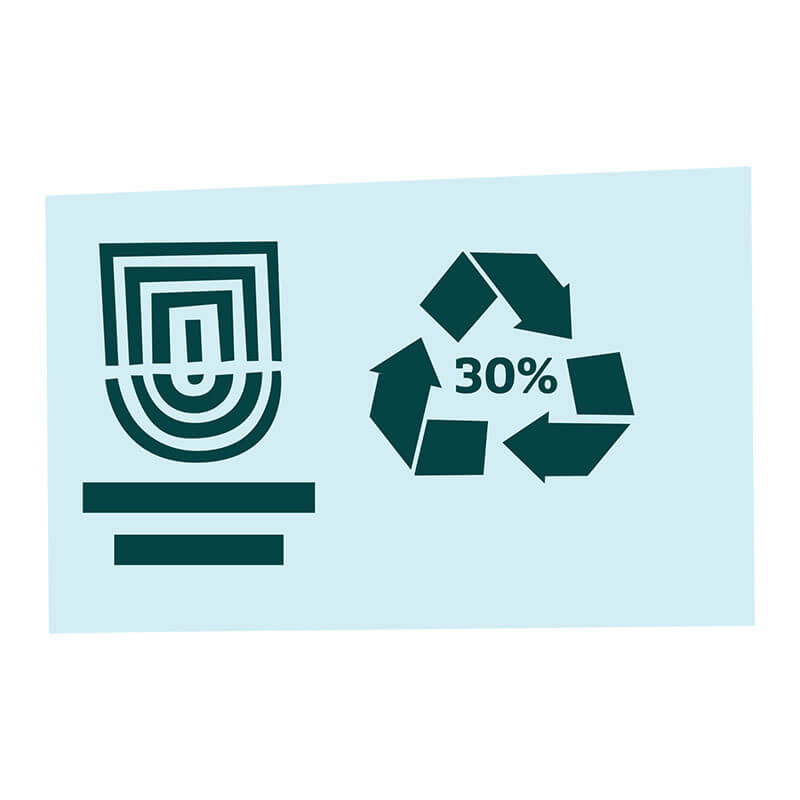The link from sustainably managed forests to the market is established through Chain of Custody certification, which tracks forest-based products from sustainable sources to the final product.
It closely monitors each step of the supply chain through independent auditing to ensure that certified, sustainable material reaches the consumer while unsustainable sources are excluded.
Chain of Custody certification provides assurances that wood contained in a product originates from certified Australian forests, and requires all companies along the supply chain to be Responsible Wood Chain of Custody certified. As long as this is the case, products can carry the Responsible Wood mark which assists consumers, businesses, governments, forest owners and managers, and other stakeholders in identifying, buying and promoting products and goods from forests that are managed sustainably. Increasingly, governments and companies from around the world require such certification within their procurement policies.

